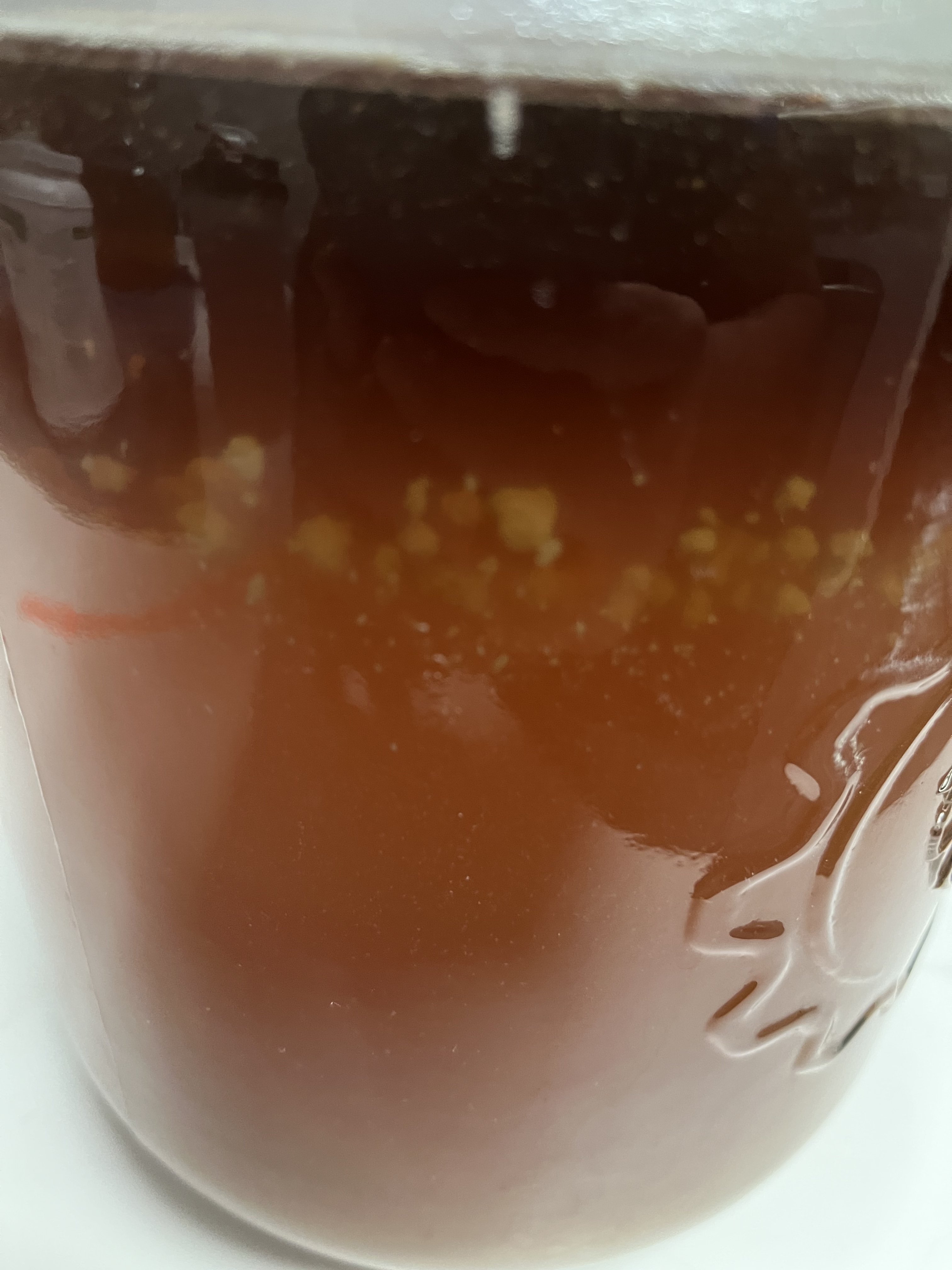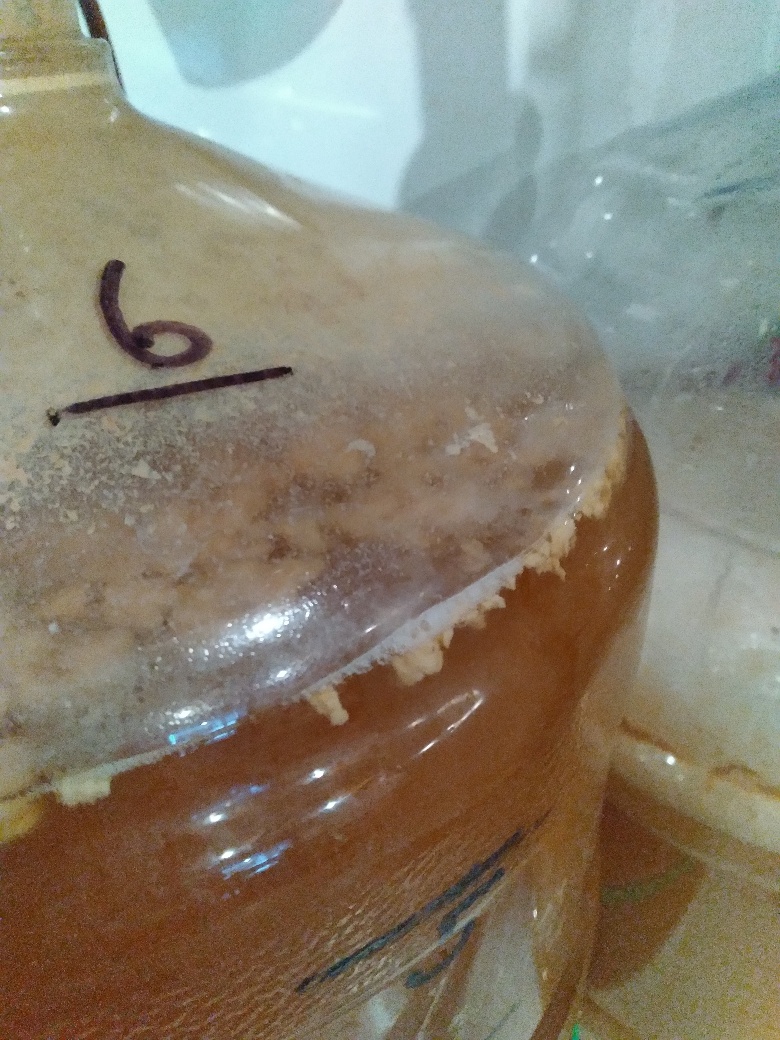Hard to see from your photos; but the first one just appears to be yeast dropping down from the remains of the krausen, which is normal. The second photo, while blurry, seems to show some white on the surface with lines radiating out. That is known as a pellicle, and does indicate some sort of infection. If there are also largish bubbles lingering on the surface, that appear slimy, this is also an almost-sure indication of an infection.
Is your beer ruined? This is a question we see very often. Can it be saved, into something drinkable? This is subjective. If you package it now, and (assuming final gravity has been reached, and you are bottling) keep those packages in a temperature-controlled environment (relatively cool, also where they won't cause any damage if they explode, consider a rubbermaid tub with a lid), you might have something drinkable. Then again, you may not. Many of us experienced homebrewers have stories of our first brews that turned out moderately drinkable, but also with what we call "bottle bombs"; which are just what the name implies. Many infections continue to ferment whatever sugars they can find in a bottle, creating more co2, that may (or may not) cause the bottle to explode. I've had a few of those, as have many of us.
The important thing, here, is to discover WHY you may have ended up with an infected batch. Sanitation is not only key, but essential. Everything that touches your beer post-boil must be sanitized; not necessarily sterile, but you need to make every effort to keep anything nasty OUT of the finished product. Did you open the fermenter a few times during fermentation? Skimp on sanitizing anything used to transfer the wort to the fermenter? There's no shame here, just know many of us have done the same thing. Read, read, read, READ! And I cannot stress this enough; sanitation is VERY important, as is PATIENCE. The one ingredient that is never listed in a beer recipe, but SHOULD be. DO NOT open the fermenter (as tempting as it may be) until at least a week after pitching yeast. Give those yeasties a chance to do their job.
And, if this batch should turn out horrible? Learn from your mistakes and try again! This site has a wealth of information on almost all aspects of homebrewing, and all of us love to help new brewers succeed.
































![Craft A Brew - Safale BE-256 Yeast - Fermentis - Belgian Ale Dry Yeast - For Belgian & Strong Ales - Ingredients for Home Brewing - Beer Making Supplies - [3 Pack]](https://m.media-amazon.com/images/I/51bcKEwQmWL._SL500_.jpg)
































